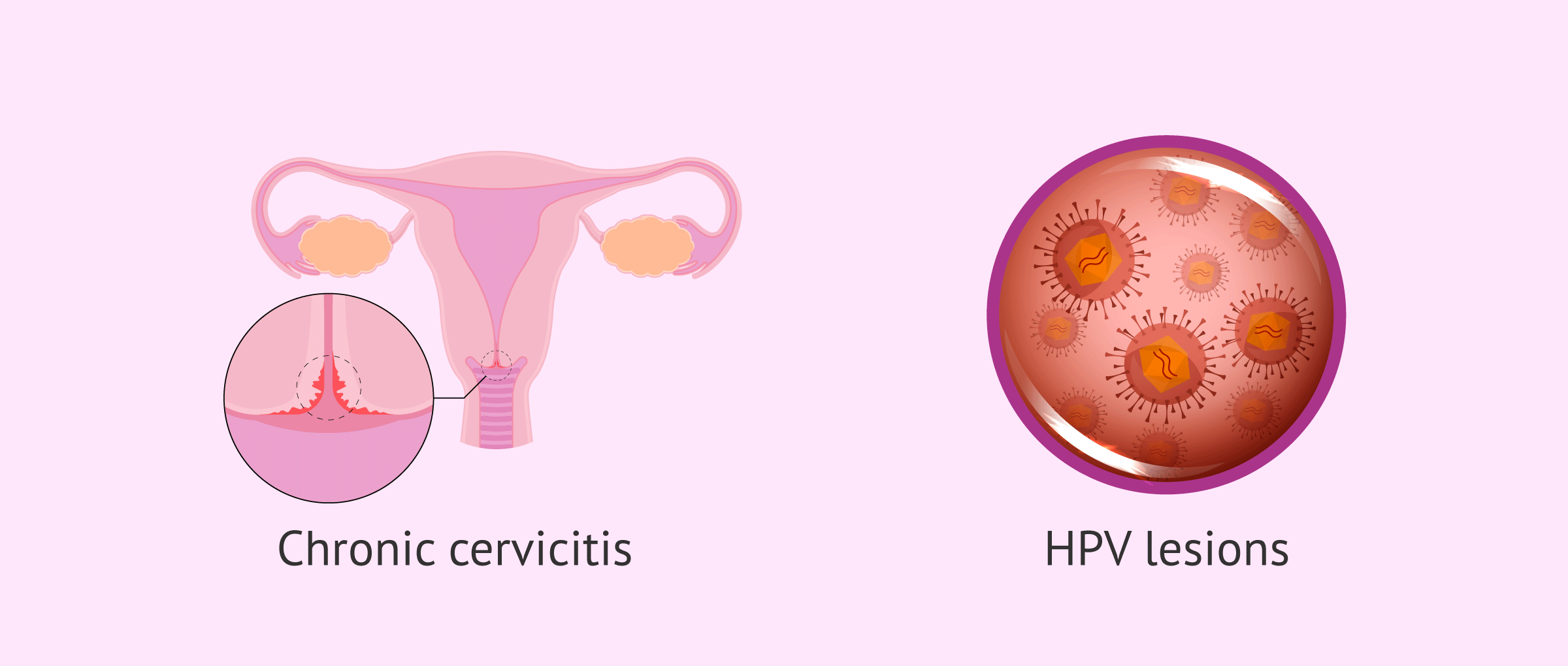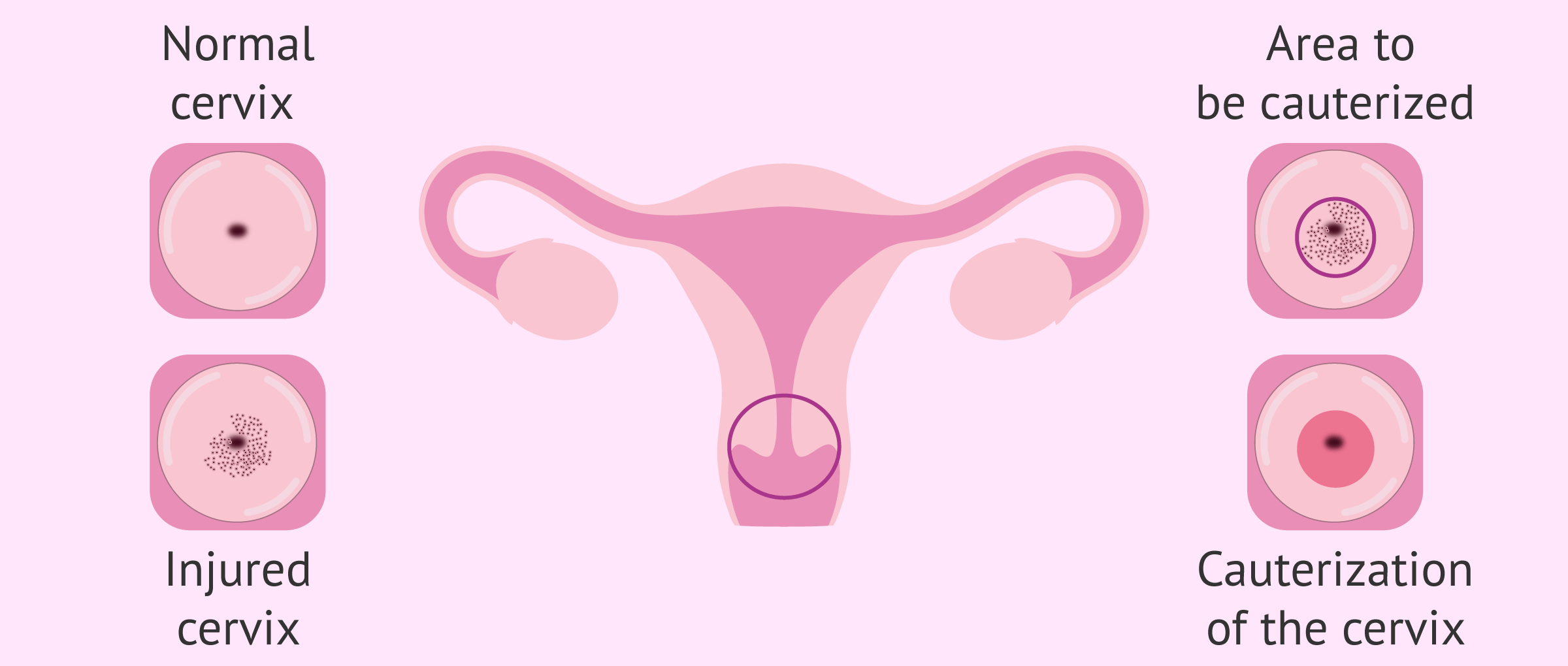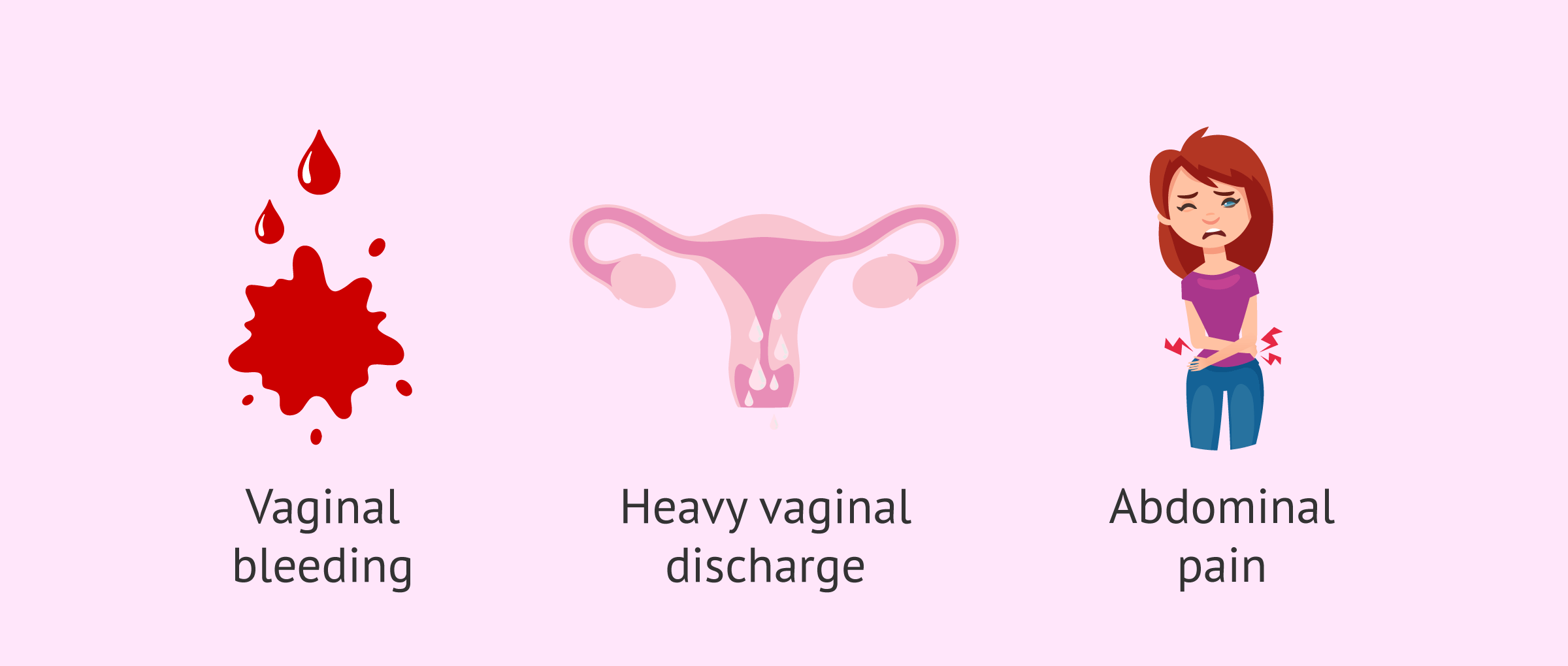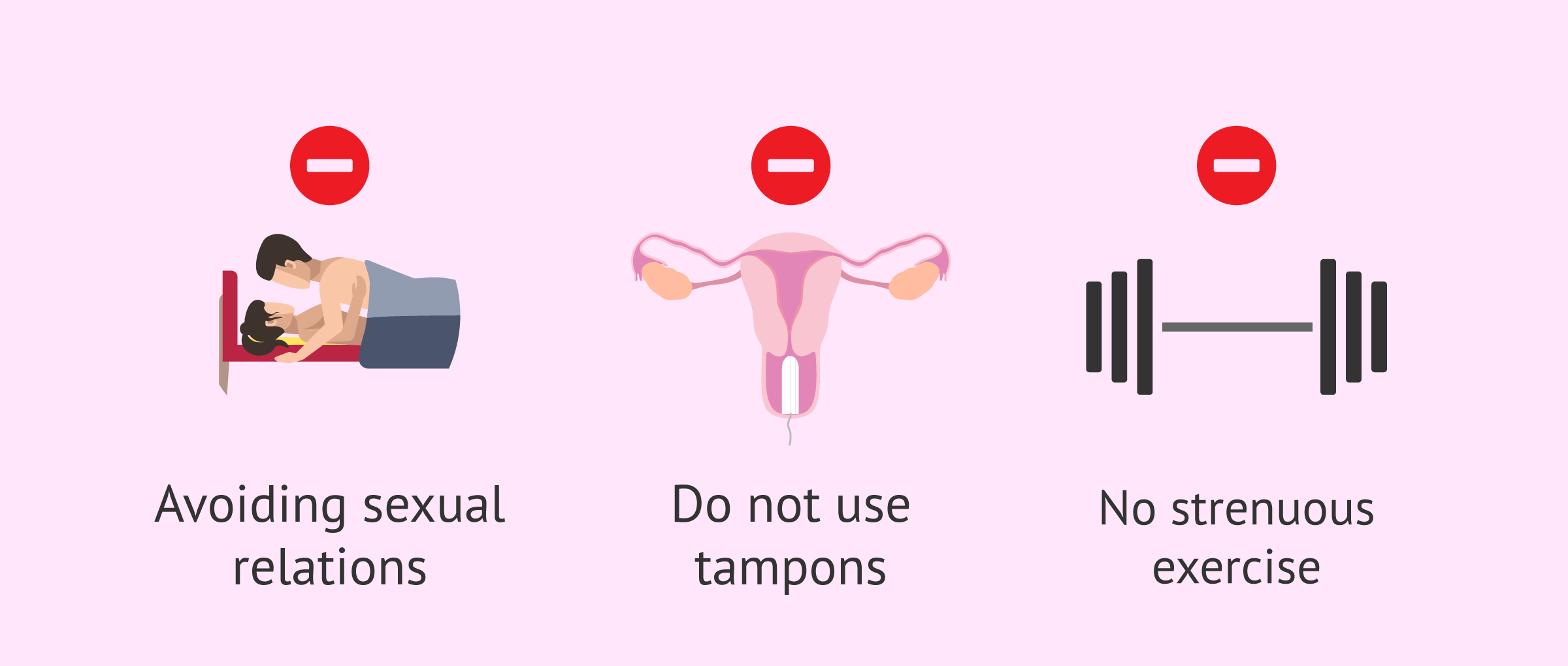Cervical cauterization is a gynecological technique that the specialist can use to eliminate certain types of lesions on the cervix. This procedure can be performed by various methods, but it is usually a simple and brief procedure performed under local anesthesia.
However, the main disadvantage of cervical cauterization is that the cauterized tissue cannot be sent for analysis, so this technique is not always the most indicated.
Provided below is an index with the 8 points we are going to expand on in this article.
- 1.
- 2.
- 3.
- 4.
- 5.
- 5.1.
- 5.2.
- 5.3.
- 5.4.
- 6.
- 7.
- 8.
What is cervical cauterization?
Cervical cauterization is a medical procedure in which tissue from the cervix that has some type of injury is removed to make room for healthy tissue.
Thus, cervical cauterization is used as a treatment in the following cases:
- Chronic cervicitis, when previously administered antibiotics have failed to eliminate the infection.
- Precancerous lesions or mild cervical dysplasia.
- Lesions caused by human papillomavirus (HPV).
It is important to bear in mind that the tissue to be cauterized will be destroyed, so it will not be possible to analyze it later. For this reason, the specialist must assess on an individual basis whether or not uterine cauterization is indicated for the patient.
However, this type of technique has been replaced in many cases by others such as loop electrosurgical excision (LEEP). This technique involves excision of the injured tissue and does allow its analysis by the corresponding pathological anatomy service.
Procedure
The cervical cauterization procedure can take place at the gynecologist's office. This is a fairly quick and painless procedure for the patient. However, it is possible to administer local anesthesia (or even general anesthesia depending on the particular case).
The patient lies on the examination table, as for a routine gynecological examination, and the gynecologist inserts a speculum. In this way, the specialist will be able to separate the walls of the vagina, clean and inspect the cervical area more easily.
Cauterization can then be performed by one of the following methods:
- Electrocautery: electric current is used to eliminate the lesion.
- Laser cauterization: a laser is directed to vaporize the lesion without affecting the adjacent uterine tissue.
- Cryotherapy: the lesion area is frozen for its destruction.
On the other hand, in the case of LEEP, a loop is used to remove the injured cervical tissue and the area is cauterized to prevent bleeding. Subsequently, as mentioned above, the tissue extracted with this technique will be sent for analysis.
Symptoms after uterine cauterization
After cervical cauterization is performed, a woman may notice the following symptoms:
- Bleeding: it is preferable that cauterization be performed as soon as menstruation ends. This allows more time for the wound to dry out and heal better before menstruation descends again. In addition, this will allow the woman to differentiate the bleeding from the intervention from menstrual bleeding.
- Abundant wateryvaginal discharge.
- Abdominal pain after surgery. In this case, the specialist will indicate to the patient the analgesics that she can take.
However, if fever, foul-smelling discharge, or heavy bleeding occurs, it is advisable to see a specialist as soon as possible, as this may indicate bleeding or infection.
On the other hand, as a consequence of cauterization, a narrowing (stenosis) of the cervical canal may occur. The scarring is usually small, although there are cases in which the scar extends, which can increase menstrual pain and even hinder gestation.
Finally, when the patient undergoes a LEEP, it is possible that the risk of having a premature delivery in a future pregnancy is increased.
Recommendations
Generally, the woman can recover her normal activity shortly after cauterization. However, the patient should take into account all the recommendations indicated by her physician, which will certainly include:
- Avoid sexual intercourse, douching, bathing and tampon use for several weeks.
- Do not engage in sports or intense physical activity.
In addition, follow-up by cytology or biopsy after cauterization will be very important. The patient should attend the check-ups recommended by the specialist, in order to verify that the intervention has completely eliminated the lesion.
FAQs from users
Is IVF after cervical cauterization riskier?
There is no increased risk in in vitro fertilization (IVF) in women who have undergone cervical cauterization. This is because fertilization occurs in the laboratory, so the cervix is not involved.
Read more
Does cauterization of the cervix hurt?
Cauterization is a simple process that is done in the gynecologist's office. In some cases and depending on the type of cauterization, local or general anesthesia will be used to prevent the process may cause some pain in the patient. However, it is usually a painless and quick process.
After the treatment and until complete healing, it is possible that the woman may have minor discomfort.
Is rest or special care needed after uterine cauterization?
It is not necessary to rest or change daily activities. However, it is advisable not to make excessive efforts that may complicate healing. In addition, it is essential to avoid as much as possible the humidity of the vaginal area, since dryness helps the wound to heal.
On the other hand, the specialist usually advises to avoid sexual intercourse for 30-40 days, for the same reason: to avoid moisture. Some women have bled because the wound was not well closed during sexual intercourse.
Does cervical cauterization cause infertility?
If cauterization is performed properly and only in cases where it is truly necessary because other less aggressive treatments have failed, it does not necessarily affect the patient's fertility.
However, a poorly performed cautery can block the cervical canal and impede the passage of sperm into the female uterus, thus preventing pregnancy from occurring.
Recommended readings
If you are interested in more information about cervicitis, you can visit the following article: What is cervicitis - Symptoms, diagnosis, and treatment.
On the other hand, if you want to read more in-depth about the cervical factor, we recommend you to click on this link: Cervical factor: female sterility due to cervical abnormalities
We make a great effort to provide you with the highest quality information.
🙏 Please share this article if you liked it. 💜💜 You help us continue!
References
Apgar BS, Brotzman G. Management of cervical cytologic abnormalities. Am Fam Physician. 2004 Nov 15;70(10):1905-16. (See)
Boardman LA, Kennedy CM. Management of atypical squamous cells, low-grade squamous intraepithelial lesions, and cervical intraepithelial neoplasia 1. Obstet Gynecol Clin North Am. 2008 Dec;35(4):599-614; ix. (See)
Forman D, de Martel C, Lacey CJ, Soerjomataram I, Lortet-Tieulent J, Bruni L, Vignat J, Ferlay J, Bray F, Plummer M, Franceschi S. Global burden of human papillomavirus and related diseases. Vaccine. 2012 Nov 20;30 Suppl 5:F12-23. (See)
Jin G, LanLan Z, Li C, Dan Z. Pregnancy outcome following loop electrosurgical excision procedure (LEEP) a systematic review and meta-analysis. Arch Gynecol Obstet. 2014 Jan;289(1):85-99. (See)
Lindeque BG. Management of cervical premalignant lesions. Best Pract Res Clin Obstet Gynaecol. 2005 Aug;19(4):545-61. (See)
McCluggage WG. Premalignant lesions of the lower female genital tract: cervix, vagina and vulva. Pathology. 2013 Apr;45(3):214-28. (See)
Nøhr B, Tabor A, Frederiksen K, Kjaer SK. Loop electrosurgical excision of the cervix and the subsequent risk of preterm delivery. Acta Obstet Gynecol Scand. 2007;86(5):596-603. (See)
Spinelli A. Preinvasive diseases of the cervix, vulva, and vagina. Semin Oncol Nurs. 2002 Aug;18(3):184-92. (See)
FAQs from users: 'Is IVF after cervical cauterization riskier?', 'Does cauterization of the cervix hurt?', 'Is rest or special care needed after uterine cauterization?' and 'Does cervical cauterization cause infertility?'.
Authors and contributors

More information about Cristina Algarra Goosman







Hi, I am going to have a cervical cauterization but I don’t understand why I can’t use a tampon afterward, if they say I will bleed… I don’t use pads.
Hello Silvana,
The post cauterization recommendations are to avoid infection or excessive bleeding when removing some of the tissue from the cervix.
I recommend that you consider the possibility of using compresses if necessary because using a tampon can be dangerous as it is a source of infection in an open wound.
I hope I have helped you.
Best regards.
Hello, my doctor told me that I have to have a cauterization, I think he told me he would do it with laser, is it very painful?
Hello DuaDue,
The cauterization of the uterus is usually done on an outpatient basis, sometimes requires local anesthesia, it is usually uncomfortable but not very painful as such.
I encourage you to talk to the doctor who is going to perform it to resolve any doubts and prepare for it in a calmer way.
I hope I have helped you,
Best regards.